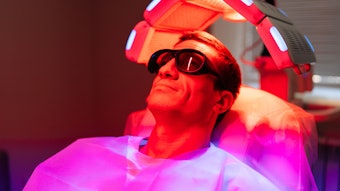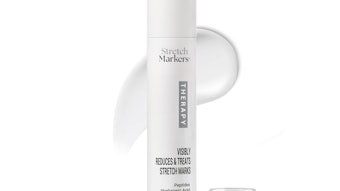Research presented at the American Academy of Dermatology's summer meeting showcases how hormonal therapy can be used to treat acne in women older than 20.
Although acne traditionally has been considered a disease of teenagers, it is also extremely common in adult women. Studies show that acne affects more than 50% of women between the ages of 20–29 and more than 25% of women between the ages of 40–49*. In fact, after age 20, women are far more likely to report having acne than men.
While there is no cure for acne, dermatologists are finding that hormonal therapies can help some women fight bothersome acne that occurs in adulthood. At the American Academy of Dermatology’s Summer Academy Meeting 2009 in Boston, dermatologist Bethanee J. Schlosser, MD, PhD, FAAD, assistant professor of dermatology and director of the Women’s Skin Health Program at Northwestern University Feinberg School of Medicine in Chicago, discussed the most widely used hormonal therapies available for women with acne and the best candidates for this type of treatment.
Factors that contribute to the formation of acne include excess oil gland production, skin inflammation, abnormal maturation of skin cells lining the hair follicle and an increased number of the acne-causing bacteria Propionibacterium acnes. However, hormones also influence both oil gland production and the maturation of skin cells thereby contributing to the formation of acne lesions. For example, when androgens (the male hormones present in both men and women) overstimulate, the oil glands and hair follicles in the skin, hormonal acne flares can occur.
“Women over the age of 20 may experience worsening of their acne or a change in the nature of their acne. This can include increased lesions on the lower one-third of the face (including the jaw line and upper neck), premenstrual flares, and resistance to oral antibiotics and other traditional acne therapies,” said Dr. Schlosser. “For these women, hormonal therapy in the form of combination oral contraceptives and/or antiandrogen medications, such as spironolactone, flutamide and dutasteride that work by reducing the activity of the male hormone testosterone, may provide significant benefit.”
Dr. Schlosser noted that the use of hormonal therapies for acne, including combination oral contraceptives, requires careful screening of patients. For example, there are numerous contraindications that must be considered before hormonal therapy is prescribed for treating acne. Such contraindications for combination oral contraceptives include a personal history of breast cancer, heart attack or stroke, uncontrolled high blood pressure, migraines with neurological symptoms, or abnormal vaginal bleeding, to name a few. Dermatologists will review these factors with patients to determine if hormonal acne therapy poses any potential risks for patients.
Based on a physical examination, a patient’s medical history and the success or failure of previously prescribed acne treatments, dermatologists may recommend hormonal therapy to enhance the results of acne treatment in women. Hormonal therapy in the form of combination oral contraceptive pills has been shown to help treat both inflammatory acne lesions—;the papules, pustules and painful nodules under the skin&mdas;and non-inflammatory acne lesions—blackheads and whiteheads. Dr. Schlosser suggests that hormonal therapy should not be used in isolation but instead recommends that combination oral contraceptives or antiandrogen medications be used in conjunction with topical retinoids for optimal results.
While there are numerous types of oral contraceptives available that can be used to treat acne in women, three combination oral contraceptive pills have been approved by the U.S. Food and Drug Administration (FDA) for the treatment of acne. All combination oral contraceptives contain an estrogen (ethinyl estradiol for most contraceptive pills) and a progestin. The estrogen component decreases the production of testosterone and other androgens by the ovaries and decreases the amount of active testosterone in the body.
Some progestins may actually mimic the activity of testosterone on the oil gland and thereby worsen acne. Therefore, Dr. Schlosser primarily recommends oral contraceptives that contain one of the following progestins: norgestimate, desogestrel or drospirenone, all of which demonstrate low or no risk of increasing the activity of the testosterone receptor.
“Combination oral contraceptives can be very beneficial in the treatment of acne in appropriately selected women, and several different oral contraceptives have been shown to be effective in clinical studies,” said Dr. Schlosser. “But the treatment of acne with combination oral contraceptives needs to be targeted to each patient’s individual needs, and patients should be monitored regularly to ensure the safety and effectiveness of their particular therapy.”
Dr. Schlosser cautioned that improvement of acne with hormonal therapy does not occur overnight and requires at least three months of continuous use before a judgment about effectiveness should be made. In many cases, patients need to continue using oral contraceptives to sustain their results over time. However, some patients can stop hormonal therapy and maintain clear skin with the regular use of a topical retinoid.
“For many women with adult-onset acne, combination hormonal therapy can provide excellent results,” added Dr. Schlosser. “Women who think they might be good candidates should discuss their options with their dermatologist who can offer a customized treatment regimen and continual monitoring to ensure optimal results.”
To learn more about acne, visit the AcneNet section of www.skincarephysicians.com, a Web site developed by dermatologists that provides patients with up-to-date information on the treatment and management of disorders of the skin, hair and nails.
Headquartered in Schaumburg, Illinois, the American Academy of Dermatology, founded in 1938, is one of the largest, most influential and most representative of all dermatologic associations. With a membership of more than 16,000 physicians worldwide, the Academy is committed to: advancing the diagnosis and medical, surgical and cosmetic treatment of the skin, hair and nails; advocating high standards in clinical practice, education, and research in dermatology; and supporting and enhancing patient care for a lifetime of healthier skin, hair and nails. For more information, contact the Academy at 1-888-462-DERM (3376) or www.aad.org.
*Journal reference: Collier CN Harper JC Cantrell WC et al The prevalence of acne in adults 20 years and older. Journal of the American Academy of Dermatology 2008; 58










